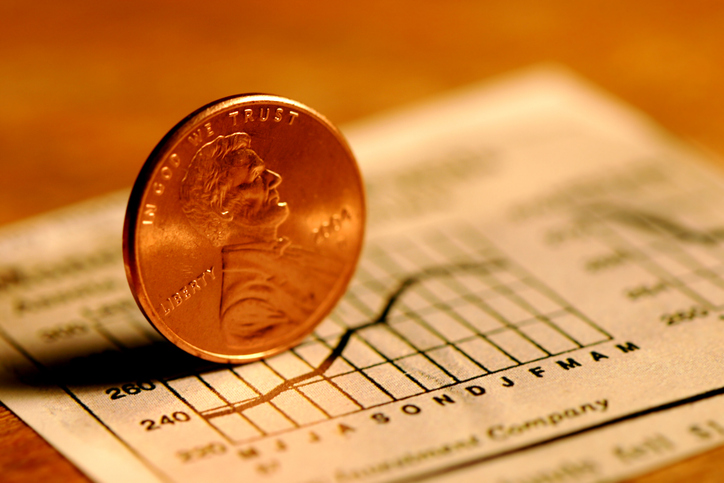Invest Like Ivy Leaguers
You can't copy their portfolios precisely, but you can use exchange-traded funds and notes to come close.
David Swensen is the Albert Pujols of the money-management world. Over his career, Pujols, the power-hitting first baseman of the St. Louis Cardinals, boasts a freakishly low ratio of strikeouts to home runs. When baseball historians consider that statistic along with Pujols's consistently high batting average and the prodigious number of runners he has driven in, they conjure up comparisons with such legends as Lou Gehrig and Ted Williams.
Swensen is the chief investment officer of Yale University's endowment fund. From July 1984 through June 2008, Yale's endowment returned an annualized 16.6%, an average of five percentage points per year better than both Standard & Poor's 500-stock index and a balanced index holding 60% in stocks and 40% in bonds. He achieved a 40-fold multiplication of wealth with one-third less volatility than the S&P 500 and with only one down year (a 0.2% loss in the fiscal year that ended in June 1988, the period that included the crash of 1987).
Alas, even Swensen is mortal. Yale's endowment suffered terribly over the 12 months that ended last June. At press time, the school hadn't yet reported results, but we estimate that the endowment lost 25% to 30% -- not surprising, given that nearly all financial markets collapsed last year.
From just $107.88 $24.99 for Kiplinger Personal Finance
Become a smarter, better informed investor. Subscribe from just $107.88 $24.99, plus get up to 4 Special Issues

Sign up for Kiplinger’s Free Newsletters
Profit and prosper with the best of expert advice on investing, taxes, retirement, personal finance and more - straight to your e-mail.
Profit and prosper with the best of expert advice - straight to your e-mail.
Swensen, who in the bond arena seems to invest only in government securities (both the traditional and the inflation-protected sort), appears to have allocated just 4% to Treasuries, one of the few asset classes that held up during the financial crisis. A lack of financing and liquidity crushed alternative investments, such as venture capital and leveraged buyouts, longtime staples of Swensen's strategy.
Still, the endowment returned roughly 14% annualized from June 1985 through June 2009.Can individual investors learn and borrow ideas from Swensen? Mebane Faber says yes. Faber, a money manager in El Segundo, Cal., analyzed the "super endowments" of Yale and Harvard. (Harvard's endowment lost 27.3% in the fiscal year that ended June 30. It gained an annualized 13.0% from July 1984 through June 2009.) He published the results in The Ivy Portfolio (John Wiley & Sons, 2009), a book that he co-authored with colleague Eric Richardson.
The average investor can't replicate the Ivy endowment portfolios precisely. When Benjamin Franklin opined that the only certainties in life are death and taxes, he evidently wasn't thinking about university endowments. Unlike the rest of us, the funds pay no taxes and never perish. Moreover, the endowments have huge staffs and access to investments, such as private-equity partnerships and hedge funds, that are unavailable to individual investors.
Still, Faber thinks you can learn much from the endowments' ability to produce respectable risk-adjusted returns by in-vesting in assets that are chancy but don't move in sync with one another. Portfolios such as these are prepared for almost any scenario (inflation or deflation, a strong dollar or a weak dollar) and should enjoy much of the fruit of bull markets while easing the pain of bear markets.
Based on his study of the Ivy endowments, Faber has constructed a low-cost portfolio of ten ETFs and ETNs (see the box at left) that draws on the Ivies' methods of allocation, diversification and risk management. Faber recommends that you rebalance the portfolio periodically. If you're interested in adding his market-timing strategies to the mix, check out his book, or visit www.theivyportfolio.com.
YOUR PERSONAL ENDOWMENT

With a 10% position in each of these ETFs and ETNs, you'll get close to the endowment investments of some Ivy League schools.ETFSymbol% to owniShares S&P GSCI Commodity-Indexed TrustGSG10%iShares Barclays TIPS BondTIP10%PowerShares DB Commodity Index TrackingDBC10%SPDR Dow Jones International Real EstateRWX10%Vanguard Emerging Markets StockVWO10%Vanguard FTSE All-World Ex-USVEU10%Vanguard REIT IndexVNQ10%Vanguard Small CapVB10%Vanguard Total Bond MarketBND10%Vanguard Total Stock MarketVTI10%
Profit and prosper with the best of Kiplinger's advice on investing, taxes, retirement, personal finance and much more. Delivered daily. Enter your email in the box and click Sign Me Up.
Andrew Tanzer is an editorial consultant and investment writer. After working as a journalist for 25 years at magazines that included Forbes and Kiplinger’s Personal Finance, he served as a senior research analyst and investment writer at a leading New York-based financial advisor. Andrew currently writes for several large hedge and mutual funds, private wealth advisors, and a major bank. He earned a BA in East Asian Studies from Wesleyan University, an MS in Journalism from the Columbia Graduate School of Journalism, and holds both CFA and CFP® designations.
-
 AI Appliances Aren’t Exciting Buyers…Yet
AI Appliances Aren’t Exciting Buyers…YetThe Kiplinger Letter Artificial intelligence is being embedded into all sorts of appliances. Now sellers need to get customers to care about AI-powered laundry.
-
 Ask the Editor: IRAs, 401(k)s and RMDs
Ask the Editor: IRAs, 401(k)s and RMDsAsk the Editor In this week's Ask the Editor Q&A, Joy Taylor answers questions on IRAs, 401(k)s and required minimum distributions
-
 Got $100 to Gamble? These Penny Stocks Could Be Worth the Ride
Got $100 to Gamble? These Penny Stocks Could Be Worth the RideVolatile penny stocks are high-risk plays with potentially high rewards. If you have $100 you can afford to lose, these three names are worth a look.
-
 Best Banks for High-Net-Worth Clients
Best Banks for High-Net-Worth Clientswealth management These banks welcome customers who keep high balances in deposit and investment accounts, showering them with fee breaks and access to financial-planning services.
-
 Stock Market Holidays in 2025: NYSE, NASDAQ and Wall Street Holidays
Stock Market Holidays in 2025: NYSE, NASDAQ and Wall Street HolidaysMarkets When are the stock market holidays? Here, we look at which days the NYSE, Nasdaq and bond markets are off in 2025.
-
 Stock Market Trading Hours: What Time Is the Stock Market Open Today?
Stock Market Trading Hours: What Time Is the Stock Market Open Today?Markets When does the market open? While the stock market has regular hours, trading doesn't necessarily stop when the major exchanges close.
-
 Bogleheads Stay the Course
Bogleheads Stay the CourseBears and market volatility don’t scare these die-hard Vanguard investors.
-
 The Current I-Bond Rate Is Mildly Attractive. Here's Why.
The Current I-Bond Rate Is Mildly Attractive. Here's Why.Investing for Income The current I-bond rate is active until April 2026 and presents an attractive value, if not as attractive as in the recent past.
-
 What Are I-Bonds? Inflation Made Them Popular. What Now?
What Are I-Bonds? Inflation Made Them Popular. What Now?savings bonds Inflation has made Series I savings bonds, known as I-bonds, enormously popular with risk-averse investors. How do they work?
-
 This New Sustainable ETF’s Pitch? Give Back Profits.
This New Sustainable ETF’s Pitch? Give Back Profits.investing Newday’s ETF partners with UNICEF and other groups.
-
 As the Market Falls, New Retirees Need a Plan
As the Market Falls, New Retirees Need a Planretirement If you’re in the early stages of your retirement, you’re likely in a rough spot watching your portfolio shrink. We have some strategies to make the best of things.